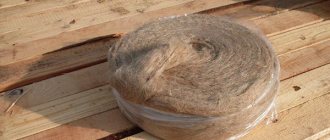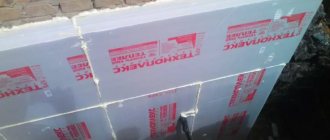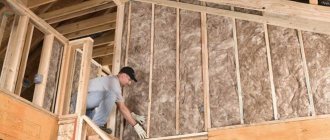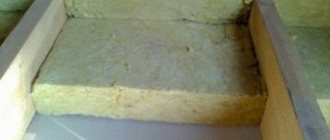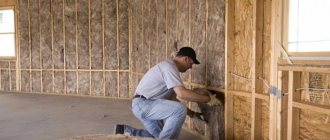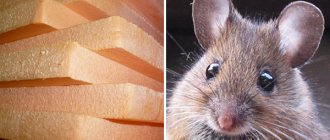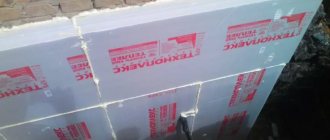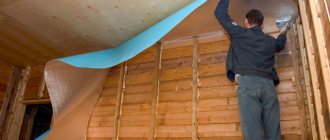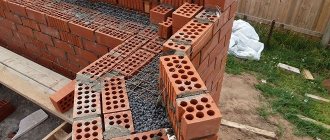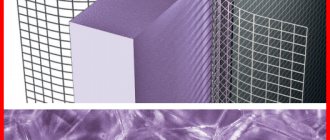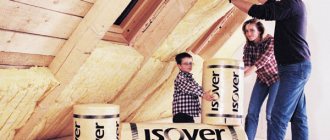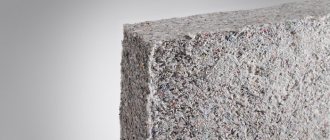Natural resources are not limitless: sooner or later they will run out. Therefore, humanity is increasingly using renewable resources for its needs. And it doesn’t matter whether it’s energy, construction or other areas of industrial production.
Natural insulation made from flax also fully belongs to the category of renewable building materials. Moreover, its use began so long ago that even in fairy tales for children, the currently popular polystyrene foam and basalt wool were not even mentioned allegorically.
The editors of the StroyGuru portal decided to find out how relevant linen insulation is in the 21st century, where are the advertising moves of manufacturers, and where are the real advantages of thermal insulation material.
Features of flax insulation
Flax is an annual bast crop with thin fibers (20-50 pieces per stem). In turn, the fibers consist of porous, up to 150 cm long, individual “hairs” (10-40 each), enclosed in a flexible shell. Thus, a flax stem can be fluffed into 200-2000 simple cellular structures, which perfectly retain heat and absorb sound waves traveling through the air.
In its pure form, flax cannot be used for insulation - it cakes quickly due to the presence of a hard trunk and is susceptible to rotting. Therefore, primary processing in the form of creasing and scuffing is necessary to free the fibers from the fire.
However, even in this form the fibers quickly cake. Therefore, synthetic substances (sintepon) are added to them, which are responsible for the elasticity of the fabric and its volume. To combat putrefactive microflora, a heat treatment method is used, as a result of which all microorganisms die - the material becomes biologically pure. But this does not mean that flax will not begin to deteriorate over time. Two factors contribute to this:
- starch (an excellent base for the development of pathogenic microorganisms) - added to mats for gluing fiber;
- constant dampness in a room with flax insulation.
In addition, we should not forget about the high degree of flammability of flax fiber, which requires treatment of tapes, canvases and mats with fire retardants. These points need to be taken into account when purchasing linen insulation.
Is it really as environmentally friendly as they say?
The cost of flax insulation is very high. Therefore, to promote a product on the market, you need features that should stimulate sales growth. Among them is the absolute environmental friendliness of the product.
This advertising move is confirmed by the quality mark awarded by the EU Commission to environmentally friendly building materials. In this regard, we note that for the most part all construction products made from flax from Western companies have this mark. What about in Russia? After all, we buy mainly domestic products.
Let's try to find out whether linen insulation is really environmentally friendly. For analysis, it is necessary to know the composition of the insulation. And here questions arise. If boron salt was used as a fire retardant, and starch is the binder, then there is no doubt about the environmental friendliness of flax insulation.
But to improve consumer characteristics, chemical binders are increasingly being used instead of starch (in some brands up to 30%). In this case, there is no need to say that the products are natural, although manufacturers claim the opposite.
Jute for laying crowns
jute is becoming increasingly popular . Felt and tow, made from the fibers of the annual plant of the same name, are replacing traditional moss with might and main. Jute, like moss, has been known to mankind for a very long time. Since ancient times, fiber has been produced from the stems of this plant, which was used for the production of durable, coarse fabrics, ropes, mats and other useful things, but even in our time, jute has not lost its value. To insulate the inter-crown space, jute tape is now being produced - a modern and easy-to-use felt-like material made from jute fiber with the addition of a certain amount of flax to give the material additional strength and flexibility. Using this tape is very simple - just roll it out and secure it with construction clips in the bowl of the log and place the crown in place.
What is good about jute? Although it is not superior to moss in terms of heat retention, it is not inferior to it. If the jute production technology is not compromised in any way, it is also no less environmentally friendly than sphagnum or cuckoo flax. Jute significantly reduces the time spent on building a log house, is very durable, hygroscopic and contains the substance lignin in its fibers, which prevents rotting of both the insulation material itself and the wood.
In ordinary log houses, the use of felt jute tape is not very practical, because... the homogeneous structure of this material, unlike moss, is unable to adequately fill all the irregularities and cavities of the log, which, in turn, can lead to some heat loss in the room. However, if you use a rounded log, profiled or regular timber for assembly, the jute tape performs best, perfectly filling flat surfaces and, again, speeding up the assembly time. So which is better, flax or jute? We will probably never get a definite answer, but we have nevertheless come to certain conclusions.
For classic hand-cut log houses, building houses and bathhouses of an old design, moss in combination with flax tow is still best suited, but for rounded logs and timber you can safely use jute tape, flax-jute, and, of course, the same moss. High-quality insulation of log walls will allow you not only to enjoy warmth and comfort on long, winter evenings, but also to significantly save on heating the room, consuming less electricity or gas. In an era of endless tariff growth, this may turn out to be a good insurance against unnecessary expenses in the future. In any case, it will never hurt to consult with a practitioner who has experience working with all the mentioned insulation materials and building materials, and only after that start building your favorite home!
Characteristics
Information about the technical and operational characteristics of insulation made from flax fibers is still contradictory. There are a number of objective reasons for this. Therefore, we will not refer to different sources to explain our choice, but will give the lower and upper limits of each indicator:
- thermal conductivity coefficient - 0.03-0.04 W/(m*K);
- density - 15-38 kg/m3;
- sound absorption coefficient - 0.98;
- operating temperature - from -70oC to +169oC;
- service life - more than 50 years;
- flammability class - G1;
- vapor permeability - MU1 (yes, equal to 0.4 mg/m*h*Pa);
- mat sizes: length - 100-120 cm; width - up to 60 cm; thickness - 5 and 10 cm.
Rolls can be up to 160 cm wide, and cuts from 20 to 400 mm.
What qualities should a sealant have?
The main function of the inter-crown seal is heat insulation ,
which means that the material used for this purpose must have a low thermal conductivity coefficient.
Secondly, since wood is a “living” material that reacts to changes in environmental conditions, the gasket between the crowns is designed to prevent the appearance of blown gaps, and for this purpose it must be sufficiently dense and elastic
. Thirdly, it is required
to be resistant to rotting,
the process of which threatens to destroy not only the material filling the cracks, but also the wooden walls themselves, as well as
the ability to give and absorb moisture, adapting to changes in the humidity regime both outside and inside the room.
The next condition for the effectiveness of interventional insulation is non-susceptibility to biological damage
from insects, rodents and birds and, finally,
environmental friendliness,
that is, safety for human health.
Advantages and disadvantages
All building materials have their advantages and disadvantages. Linen is no exception. According to reviews on the forums, the advantages of this type of insulation include:
- high thermal insulation properties - the thermal conductivity coefficient is only 0.03-0.040 W/(m*K), which is only slightly inferior to polyurethane foam, is on the same level as polystyrene foam and is superior to mineral wool;
- durability, confirmed by practice - the service life is 50-100 years (manufacturers indicate the figure 50, but in practice, when dismantling wooden buildings, linen insulation was in working condition for 75-100 years);
- vapor permeability, allowing the walls to “breathe”, removing excess moisture from the room to the street;
- increased hygroscopicity, which on the one hand is a negative property - it gets wet quickly, on the other hand, flax-based insulation, like wood, regulates the humidity regime in the room: when there is an excess, it absorbs steam molecules, when there is a deficiency, it releases, and dries very quickly. The big advantage of this property is that no vapor barrier is required. Consumers do not need to worry about frequent but short-term wetting of flax, because... after drying, all characteristics are fully restored. The only thing that can happen is darkening of the fibers;
- possibility of installation by surprise, without the use of glue and dowels. Such installation became possible after manufacturers began to make mats slightly larger in width and length (2.5 cm) than the standard dimensions of the lathing cells or the distance between the lags (beams);
- environmental safety, not only in relation to homeowners (not an allergen, does not emit harmful and toxic substances when heated and burning), but in general flax absorbs CO2 when grown, is completely decomposed, can be reused, and is a renewable resource;
- good soundproofing characteristics, but only sound waves traveling through the air are absorbed. Linen is practically useless against structural and impact noise;
- simple and safe installation - all work can be done with your own hands without the use of special clothing. The problem only arises if the mats need to be adjusted to size - flax fiber does not cut well.
Among the many advantages of a heat insulator, we should not forget about the disadvantages . And they are critical in many ways. Among the disadvantages:
- high price. The cost of the material is available only to wealthy property owners;
- increased flammability. It is not for nothing that gunpowder contains flax components. Therefore, treatment with fire retardants is mandatory. And not just spray with boron salts, but add up to 13% of this substance to the mat. After treatment, the flammability class is reduced from G3 to G1 (does not support combustion);
Attention: studies by Finnish scientists have shown that with a mass fraction of fire retardants less than 12%, flax products burn well. And the lower the percentage of boron salts, the more difficult it is to extinguish the flame.
- subject to complete decomposition, no matter what the manufacturers' advertising brochures say. However, there is one thing: putrefactive microflora reproduces only in an environment with constant humidity or the presence of a base in the form of starch. This must be taken into account during construction and renovation;
- is damaged by rodents, which again conflicts with advertising, albeit with a caveat. Mice and rats do not digest flax fiber, so the advertisement seems to be right - the product is not included in the rodent food chain. But the fact that this natural insulation is the favorite habitat of these pests is modestly kept silent;
- loss of operational properties (heat and sound insulation), under mechanical loads (compression);
- requires treatment with moisture-protective compounds when used in rooms with high humidity, which further increases the cost of thermal insulation.
Installation
Installation of slabs begins with adjustment and measurements. The joining will be reliable if the width of the slabs is 10-20 mm greater than the distance between the beams and joists: then the material will fill the space and be securely fixed without fasteners, which will help to avoid gaps and deterioration of the insulation.
The insulation layer should not be interrupted in the area adjacent to the wall.
cutting
After measurements, the slabs are cut. By the way, cutting does not cause problems - the material does not break or crumble, maintaining clear edges. It is better to use special knives with wave sharpening, an electric hacksaw or a small band saw. An ordinary bread knife will also work if it does not bend and is thick enough, as well as a hand saw with fine teeth.
When the insulation is 5 cm thick, it can be cut with large sewing scissors. Cutting can also be done through packaging. If you decide to work with a power tool or a hacksaw, then the plates can be placed on a stand for convenience. For an even cut, the slab should be lightly pressed down with a board and cut along it.
Strengthening
Tile flax wool does not require fastening. It needs to be installed between the rafters. The elasticity will allow it to be well fixed in the structure. If insulation is installed for an inclined surface, then additional sheathing must be used. The lathing will provide an air gap to ventilate moisture and retain heat.
The slabs are inserted end-to-end - the fibers are intertwined at the joints without seams, taking the desired position. If you need to make a hole, make sure that the drill does not cut into the slab: it is better to drill at high speed so that the fibers do not wrap around the drill.
Vapor barrier
If a dry room is insulated, then a vapor barrier is not required. But spaces with average humidity need to install a vapor-permeable membrane or kraft paper (construction cardboard) - this layer will protect the linen from moisture and allow it to be removed from the walls without creating an “aquarium effect.” Vapor barrier is needed in places with constant high humidity - in a bathhouse, bathroom, swimming pool, laundry room. The vapor barrier is installed with an overlap of 10 cm, the seams are taped. In steam rooms it is better to use a foil vapor barrier.
Roofs can be insulated: a protective coating of micro-perforated film and direct flax insulation are placed on the crossbars. A vapor barrier is laid on top and finishing is done.
Application area
In terms of sales volume of 0.5% in physical terms (in m3), linen insulation in slabs (together with tapes for inter-crown insulation) occupies a modest last place in the market of thermal insulation materials. There are two reasons: the high price and a special niche in thermal insulation, tied to wooden houses. It is rarely used in buildings made from other types of building materials, although flax can be used for thermal insulation:
- floor, but only along joists (not used under screed due to loss of performance properties under pressure);
- walls, both inside and outside. But here there are limitations: you cannot use the “wet method” of insulation;
- interior partitions, but mainly as a sound-absorbing material;
- ceiling, but outside. For internal insulation, the height of the apartment or house is reduced too sharply (to the thickness of the mat of 10 cm, you also need to add cladding or a suspended (suspended) ceiling);
- roofs, but only pitched;
- door and window blocks - serves as a seal.
In addition, fiber tapes are used to insulate the inter-crown joints of log houses, and tow is used to seal various cracks and gaps. If we look at the types of buildings, flax can be effectively used in frame and wooden houses and apartments.
Frame house. The difficult climatic conditions of Russia did not allow us to find the optimal insulation option for frame houses. Negative nuances always appear. With the advent of linen mats for insulation, it turned out that they are almost ideally suited for this type of building: they perfectly protect against noise, heat loss in winter and overheating of house rooms in summer. The ability of insulation to regulate the indoor microclimate all year round turns flax into the main type of heat insulator for frame buildings.
Wooden house. Initially, flax and wooden houses were inseparable. Their cooperation dates back several thousand years. Therefore, with the advent of new qualities in flax insulation, the most natural way to use flax-fiber thermal insulation materials for insulating various structural elements of a wooden house is seen.
Apartment. Linen mats do their job well in apartments when insulating floors and walls. Limitations exist for the bathroom and kitchen due to the high hygroscopicity of the fibers.
What is jute?
Jute fiber is a natural material valued primarily for its strength and other performance properties. It is made from the stems of the herbaceous plant of the same name – Corchorus. It is grown in a humid climate at a temperature of 24–37 degrees. The main importers of jute are countries such as India, Bangladesh, China, Uzbekistan, etc. Jute stems contain cellulose (more than 60%), lignin (more than 12%), wax and pectin (less than 1%) and other substances. This composition ensures high wear resistance, flexibility and hygroscopicity of jute fibers.
Types of insulation
The construction industry offers consumers several types of linen insulation:
- tow;
- felt (linen);
- batting (linen);
- mats (slabs).
Tow. Tow is a waste from the processing of flax and other bast crops (hemp, jute, etc.), resulting from the scutching process. Consists of coarse, short, tangled fibers, heavily contaminated by fire. It has been used in construction since the beginning of flax cultivation to produce textiles.
It is mainly used for inter-crown insulation of log houses. But it can be found in the openings of doors and windows (instead of polyurethane foam), as well as in the joints of slabs of the main insulation, for example, polystyrene foam.
Felt. The definition of “felt” has nothing to do with linen insulation, because the word arose to define a dense non-woven material made from wool. But manufacturers of a similar material made from flax fibers could not come up with an independent name for dense non-woven tapes. So they began to call their products linen felt.
The product is made from long fibers using needle-punched technology - this is when special barbed needles form a fabric, holding it together with its own fibers. Used as inter-crown linen insulation.
Batting. Batting is another type of non-woven fabric. It differs from felt in that nylon or cotton thread is used to hold the flax fiber layer together. It is used in the same way as felt, but with one difference: it is laid in two layers. This requirement is explained by production technology - the insulating tape has a low density. Total about 500 g/m2.
Mats. Insulating mats made from flax fiber are produced using starch, which serves as a binder between the fibers. In many industries, mats are additionally stitched with silk or cotton threads. Thermal insulation material is produced in the form of rolls and slabs 5 and 10 cm thick. It is used to insulate various building structures.
Attention: in materials about linen insulation, another type is called: flax-jute. However, using the term “flax-jute” to define insulation as an independent type consisting of a combination of flax and jute fibers is incorrect. It would be more correct to say that other types of bast crops can be added to flax fibers. After all, the so-called “flax-jute” insulation is produced in the form of felt, batting and mats. Therefore, it is impossible to say that this is an independent type of heat insulator.
Flaxjute
In terms of technical characteristics, jute and flax have several opposite qualities. Jute is coarse and brittle - flax is more elastic and stronger. Jute is more resistant to moisture - lignin contained in jute is added to flax. Therefore, some manufacturers offer to insulate the house with jute-linen inter-crown insulation, that is, a mixture of these fillers.
As for specific prices, they are comparable to the cost of jute. For example, inter-crown insulation of this type costs 10 rubles per meter (Density 380-400 g/m2; Width 15 cm; Thickness 6-8 mm)
Popular brands and prices
In the Russian trading network, linen insulation can be found under many brands: “Thermo-Hanf”, “Val-Flax”, “ThermoLen”, “Flaxan”, “Ekoteplin”, “Ekoterm”, “Ekolen”, etc., as Russian production and manufacturers from Europe.
"ThermoLen". Products under the TermoLen brand are produced by the Novosibirsk Flax-Jute Company. She was the first in Russia to master the latest AirLay and thermal bonding technologies for the production of environmentally friendly natural insulation materials from flax.
The use of modern equipment in the production line made it possible to abandon starch as a binder (bicomponent synthetic fiber is used), which provided the mat with additional elasticity, durability and restoration of volume after removing mechanical loads. All this together allows you to install insulation into the cells of the sheathing by surprise, without additional fastening.
You can buy insulation at a price of RUB 5,760/m3 and above (depending on density).
"Ecoteplin". One of the leaders in the production of various types of flax products is the Russian concern Khors. It includes not only processing enterprises, but also agricultural production. Therefore, the TermoDom enterprise, specializing in the production of insulation from bast crops, works on its own raw materials.
A special feature of the product is the complete absence of synthetic materials. Starch is used as an adhesive. This is both an advantage and a disadvantage. The advantage is that the product belongs to the category of absolutely environmentally friendly. Therefore, it can be used without restrictions in residential areas with children or people with allergies.
The downside is fast caking and a service life of 40-50 years (starch is to blame - it serves as a base for the proliferation of putrefactive bacteria), which is almost half as long as analogues with synthetics in the composition.
The cost of 1 m3 starts from 5,500 rubles.
"Ecoterm". Ecoterm insulation is supplied to Russian retail chains from Belarus (Politex CJSC). Available in the form of mats 5 and 10 cm thick. Used for sound and heat insulation of private houses and apartments.
It is mounted by surprise thanks to a polyester fiber binder. It has high density and elasticity, resistance to deformation and shrinkage (does not cake for a long time). However, such properties still do not allow the use of insulation under the screed.
In addition, a serious drawback is the lack of impregnation with fire retardants, which actually affects the price - it is lower: insulation can be purchased from 5,000 rubles/m3.
Val-Flax. Products with the unusual name “Val-Flax” are produced by Artemis LLC (Novgorod). New to the construction market. However, the high quality of the product, which meets all EU requirements, and the price (from 5,400 rubles/m3) paint its prospects in bright colors.
"EcoLen". Smolenskaya specializes in the production of felt made from flax using needle-punched technology. Dense tapes "EkoLen" are used for sealing connecting joints between the crowns of a log house and in the form of seals when installing window and door blocks.
According to the manufacturer’s recommendation, this material can also be used to insulate the walls of wooden houses from the inside, which raises a number of questions: why is this necessary at all and what fastening technology should be used for thin sheets. The downside is the lack of fire protection.
The company's products cost from 4,900 rubles/m3.
Features of choice
When choosing linen insulation, you need to pay attention to the following parameters:
- the material should not have foreign impurities in the form of fire, which not only worsens the appearance, but also reduces the technical and operational characteristics;
- The density of the tape or fabric should be uniform. Otherwise, cold bridges will form over time;
- When choosing between tow, batting, felt and mats, you need to focus on the place of use. Here the width and thickness of the insulation, its density and purpose play a role. So, for profiled timber, felt with a thickness of up to 3 mm and a density of up to 300 g/m2 is suitable. The joints of the crowns of rounded wood must be sealed with felt 5 mm thick and density 500 g/m2 or batting 15 mm thick (it will settle when laying the log). Between the timber you need flax felt with a width of 10 mm and a density of 8 kg/m2;
- The binder must still be polyester fibers. There will be no harm to the health of family members, and the service life is almost doubled.
Flax tow
Tow is an inter-crown insulation made from the remains of flax, unsuitable for spinning and stitching. Tow can also be made from other fibers: for example, jute or hemp, but flax is the most common. Usually it is packed in bales; less commonly you can find tow in the form of a ribbon. Tow is traditionally used for caulking, and packaging in bales lends itself well to this. But due to the fact that tow is quite inexpensive, some try to use it for inter-crown insulation. That is why manufacturers made such inter-crown tape insulation.
Flax tow
Experts do not recommend using tow for complete insulation, since it is most often clogged with foreign impurities and is ineffective for thermal insulation of a residential building.
Insulation technology
A feature of the insulation technology with flax mats is that the insulation cannot be secured with glue or dowels. Only installation by surprise. Therefore, using the example of insulating walls inside a house with flax insulation, we will consider all the nuances of thermal insulation work. They are performed in the following sequence:
- the wall is cleared of all unnecessary things: switches, sockets, fasteners, etc.;
- an audit of the condition of the wall surface is carried out. If necessary, repair work is carried out;
- the sheathing is stuffed with cells 1-2 cm smaller in width and height so that the mats stand apart;
- roll insulation is cut to size, and one should not forget about an overlap of 1-2 cm;
- mats are installed in cells;
- the counter-lattice is stuffed;
- the insulating layer is covered with finishing material, for example, PVC panels or lining, or sheets of plasterboard for painting or wallpaper.
Important: vapor barrier work is not carried out under flax.
